Winter doesn't mean your garden has to lose its color or vibrancy. Many cold-hardy plants bloom throughout the chilly months, providing splashes of life even when frost covers the ground. Here's a list of some of the best winter flowers, from early bloomers to those that thrive in warmer climates.
Jump to:
Winter-Blooming Flowers for Northern Climates
Bulbs
1. Squill (Scilla spp.)
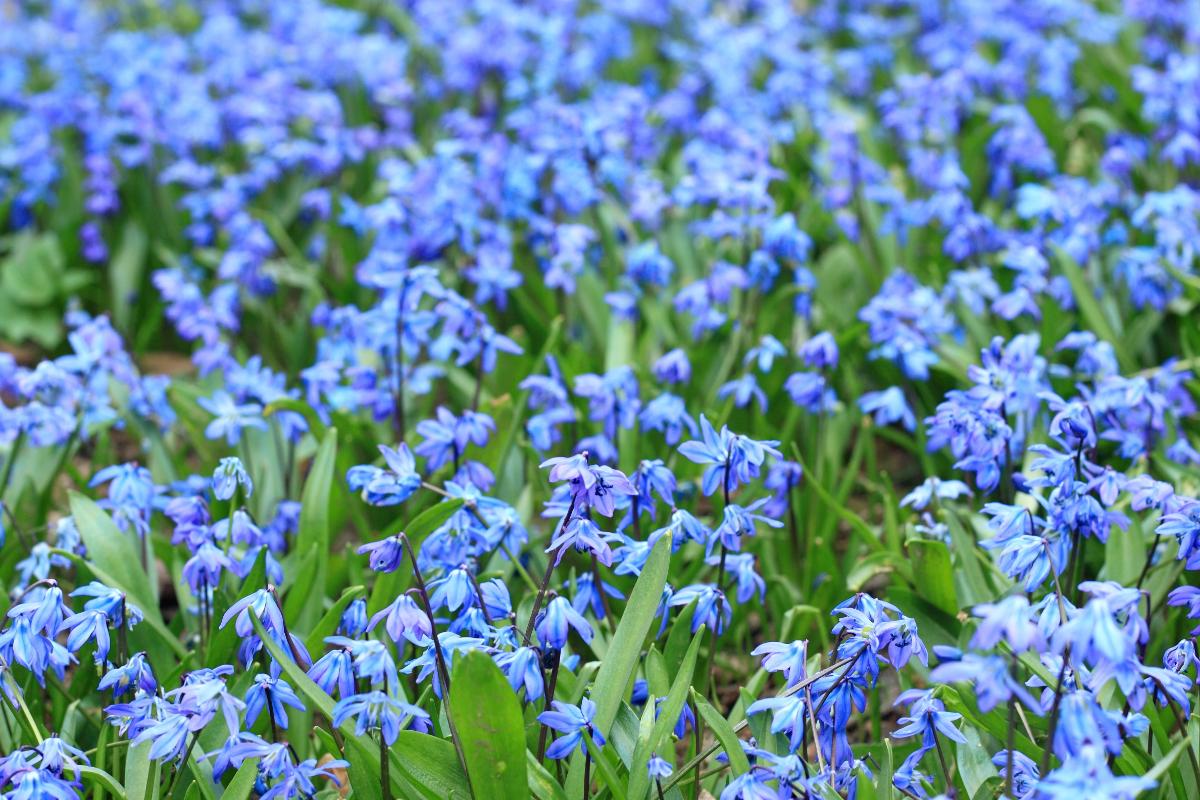
Scilla, also known as squill, is a spring ephemeral that blooms right after the snow melts and sometimes while the snow is still on the ground). It produces star-shaped flowers in shades of blue, pink, or white that bloom early in the spring but are cold-hardy enough to pop up through the snow. They look good in rock gardens, but they look even better when they’re growing across the whole front yard in a pretty carpet of blue.
2. Starflower (Ipheion uniflorum, formerly Triteleia uniflora)
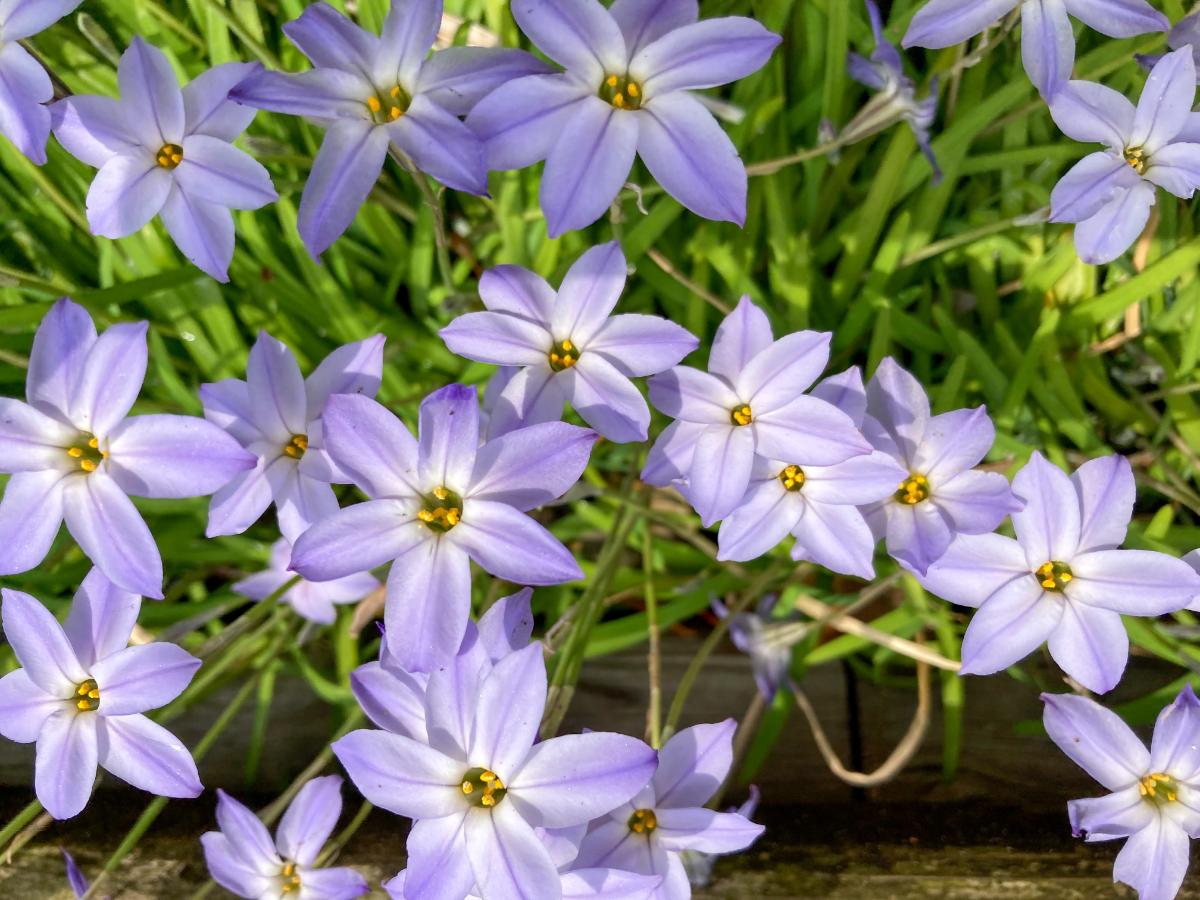
This dainty flower, which grows only 3 to 6 inches tall, blooms in late winter and early spring. Its star-shaped flowers appear in periwinkle, pale blue, and white. Starflowers are drought-tolerant and thrive in rock gardens or borders. It also naturalizes in lawns in full sun for early spring delightfulness, though it will smell like garlic when you mow it.
3. Winter Aconite (Eranthis hyemalis)
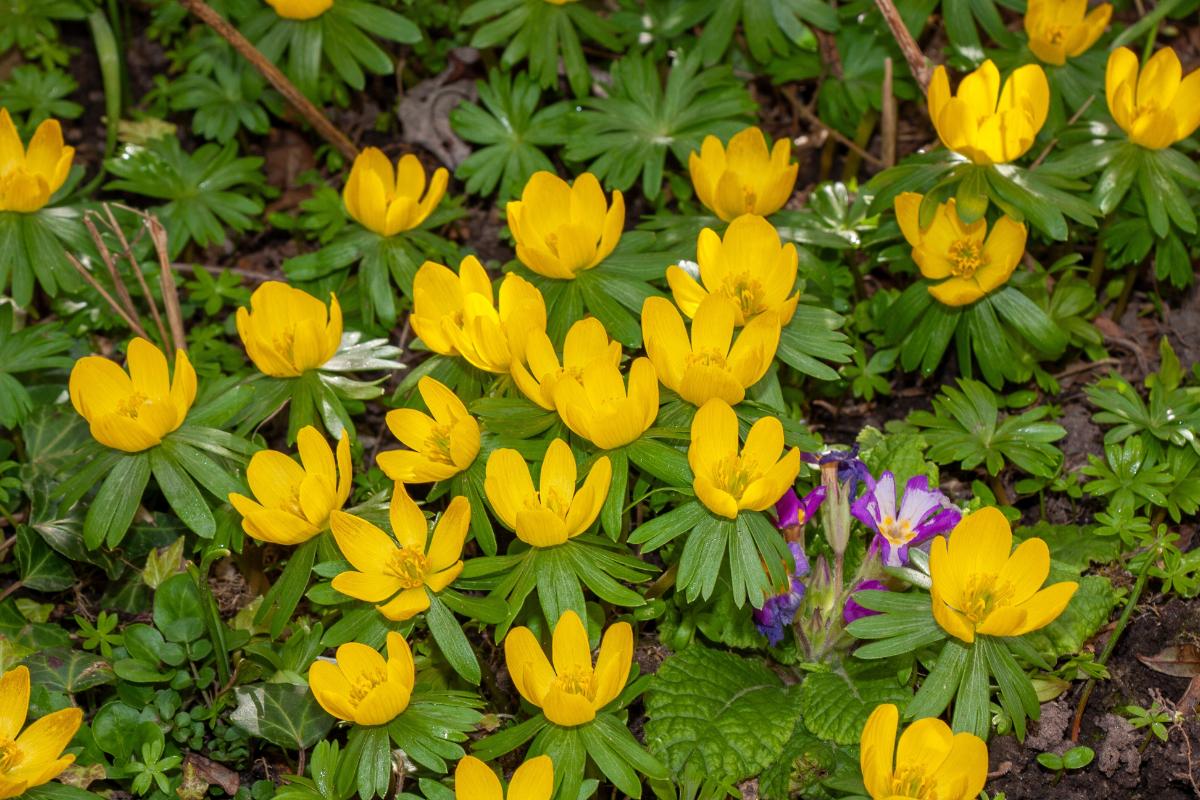
Winter aconite is one of the earliest bloomers of the year, often showing its bright yellow buttercups in late winter. Each flower sits upon a little ruff of green bracts, and they look like a troupe of tiny, hardy Elizabethans. These small, ground-hugging flowers spread quickly in sunny spots and pop up, even in snow, before the first snowdrops appear.
Note: Don’t plant if you have small children or pets that like to eat random things because the plant and tuber are poisonous.
4. Glory of the Snow (Chionodoxa forbesii)
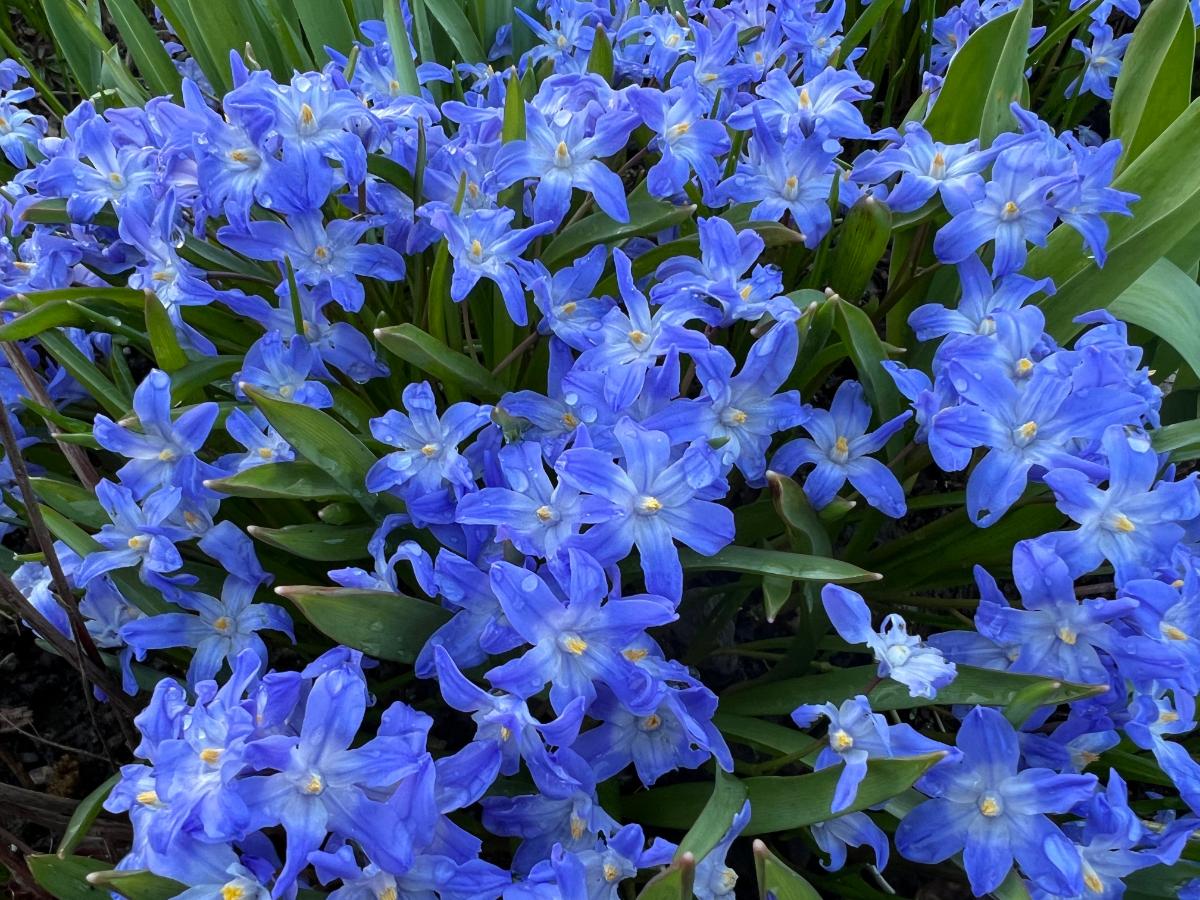
As its name suggests, Glory of the Snow thrives even with snow on the ground. Its star-like blooms of pale blue, white, and pink pop up in groups of 5 to 10. These short little flowers will carpet your lawn, your bare perennial beds, or the areas under trees with a pretty little sea of flowers. It's a low-maintenance plant that looks spectacular in rock gardens or naturalized with any of the other bulbs mentioned in this article.
5. Daffodil (Narcissus)
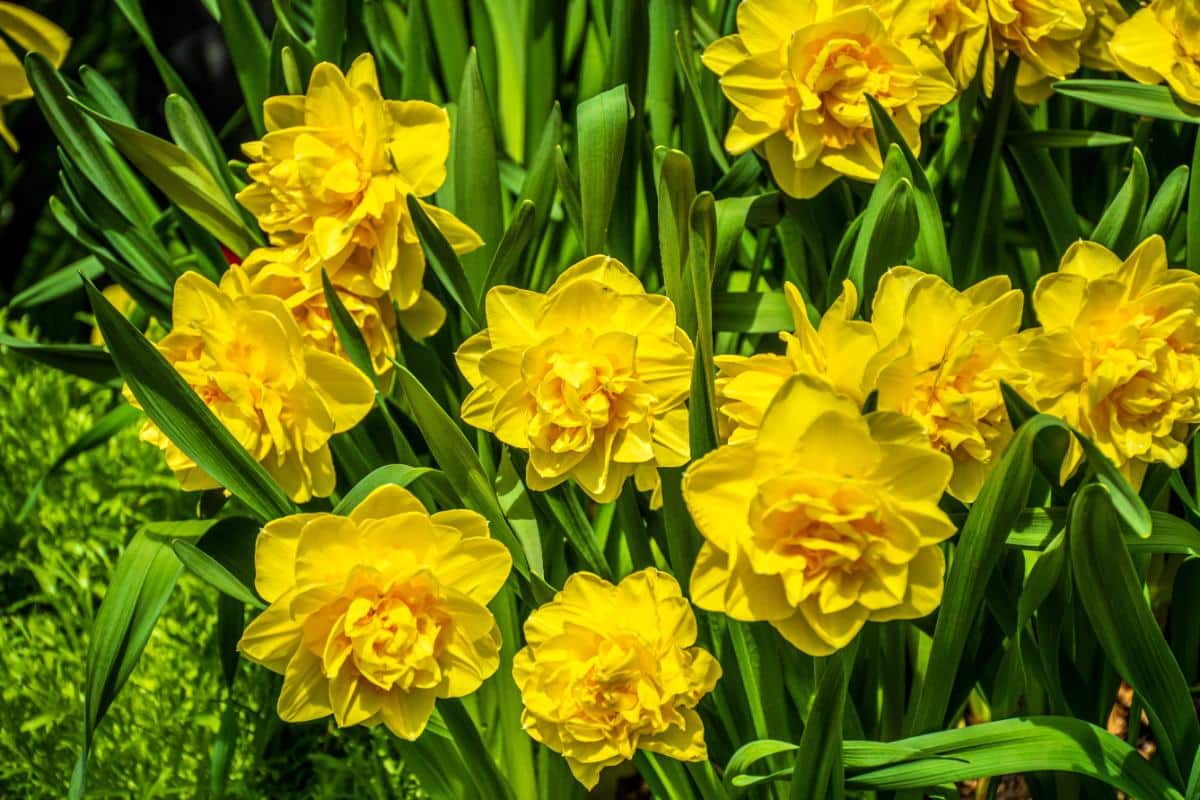
Daffodils are a classic early spring bloomer, but certain varieties will emerge in late winter, such as ‘February Gold,’ ‘Ice Follies,’ or the dwarf daffodil ‘Tête-à-tête'. Their cheerful yellow or white flowers are frost-tolerant, adding beauty to garden borders or containers. The selection of daffodils is vast, so you can plant different varieties that will extend bloom time from mid-winter to early summer.
6. Snowdrop (Galanthus elwesii)

Galanthus elwesii is the earliest and larges of snowdrop varieties, often pushing through the snow to reveal delicate, drooping white blooms. The blooms close in cloudy weather and open on sunny days. This heirloom variety prospers in rich woodland soil, and they look wonderful in clusters under trees or along walkways.
7. Crocus (Crocus spp.)
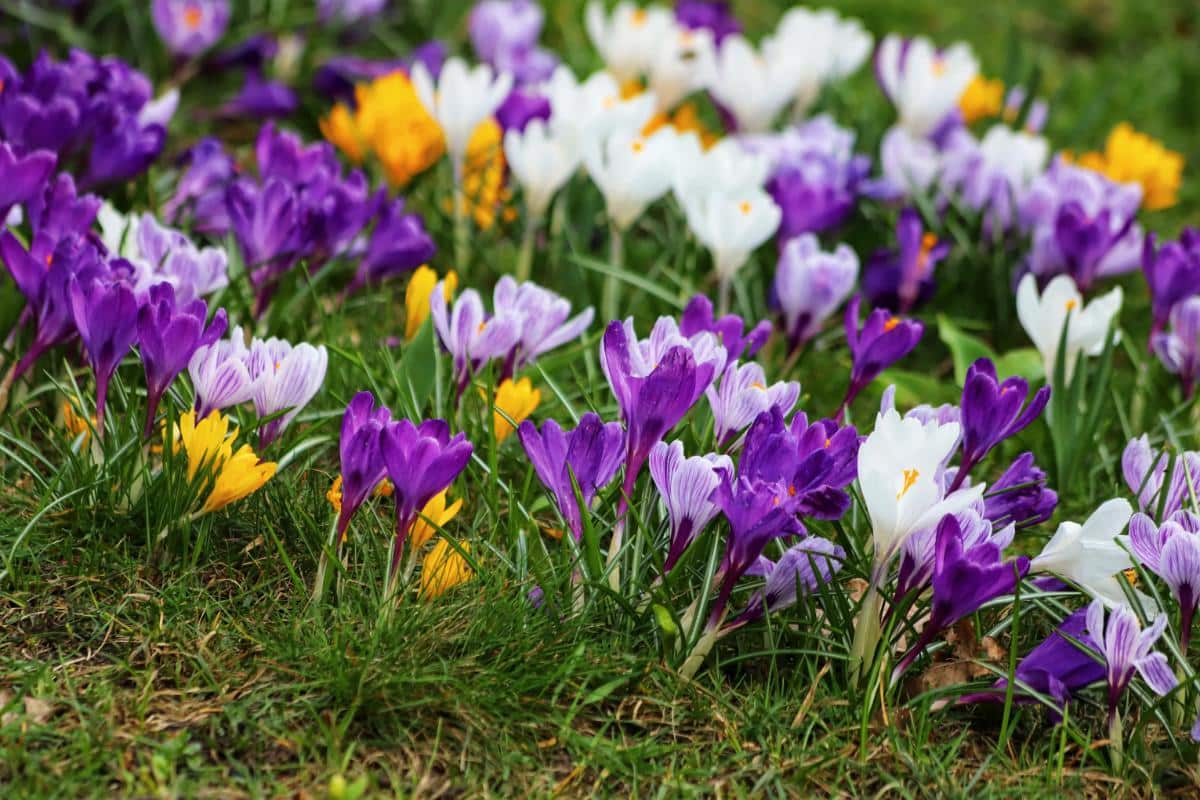
Crocuses are another early bloomer, lifting colorful purple, yellow, or white flowers to the sun in late winter. Crocuses are perfect for naturalizing in lawns and look great when planted under shrubs and among dormant flowers, giving color and life to a garden before the other plants wake up.
Perennials
8. English Primrose (Primula vulgaris)

The showy yellow or cream flowers of English primrose can survive cold temperatures, making them a welcome sight after long winters. This flower has a large number of varieties, including cheery magenta, orange, white, red, and even purplish blue. English primrose attracts early pollinators and helps perk them up after a long winter’s dormancy.
9. Pansy (Viola x wittrockiana)
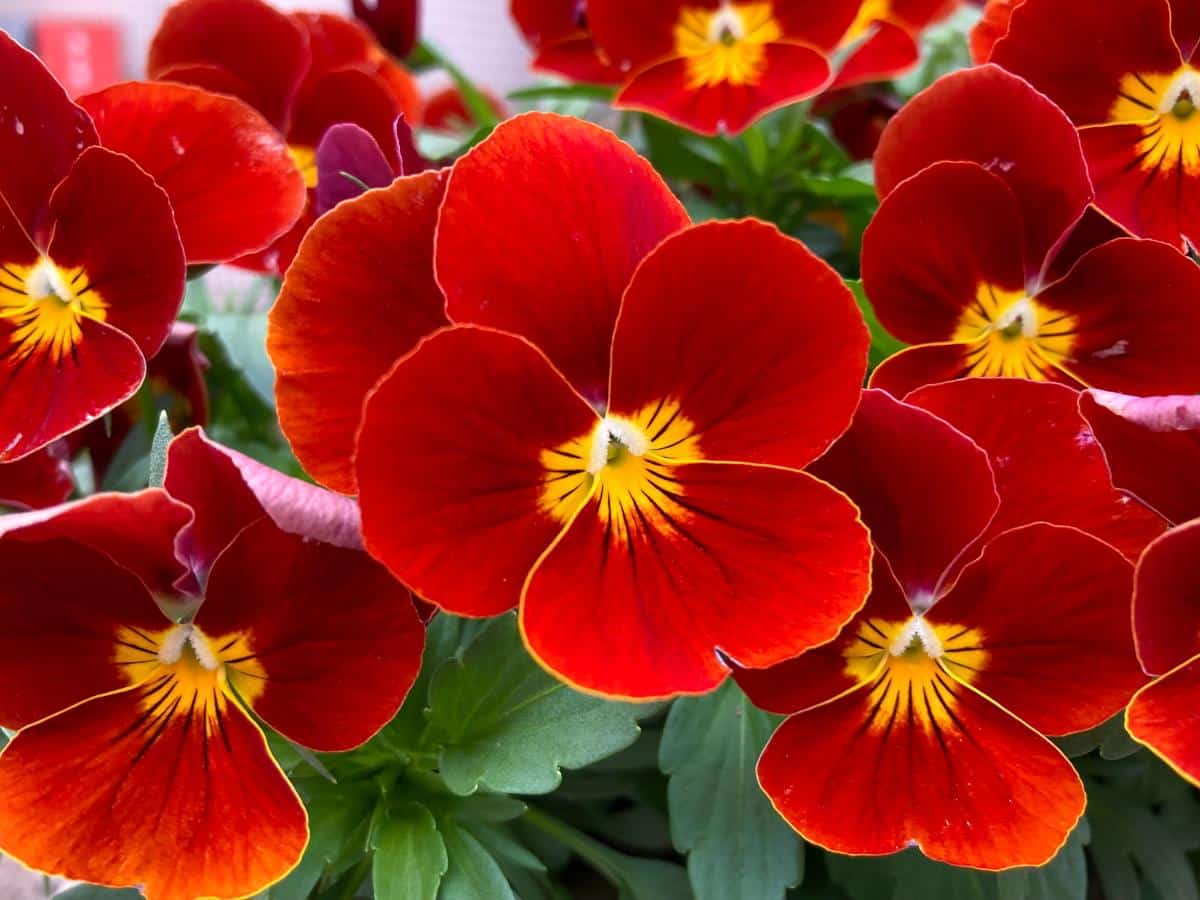
These stocky winter flowers are a versatile, easy-growing flower that blooms through the winter months in mild climates, providing cheerful accents to containers or flower beds. Pansies can be found in a rainbow of colors – blueberry, lavender, red magenta, and burgundy, and all shades of orange, yellow, and white.
10. Christmas or Lenten Roses (Helleborus)

Hellebores, also known as Christmas roses, bloom in winter and early spring, their blossoms gazing at the snow at the plant’s feet. These tough perennials are ideal for shade or light, dappled sun, and their evergreen foliage is mostly immune to winter’s freezes. Some have flowers that are almost black for anyone who wants to grow a goth garden.
11. Reticulated Iris (Iris reticulata)

This dwarf iris blooms with other early flowers like snowdrops, squillas, and crocuses, featuring flowers in royal blue, bluebird, and deep purple. Reticulated iris is an excellent choice for rock gardens or container planting. It’s also delightfully fragrant.
12. Ornamental Kale & Cabbage (Brassica oleracea)
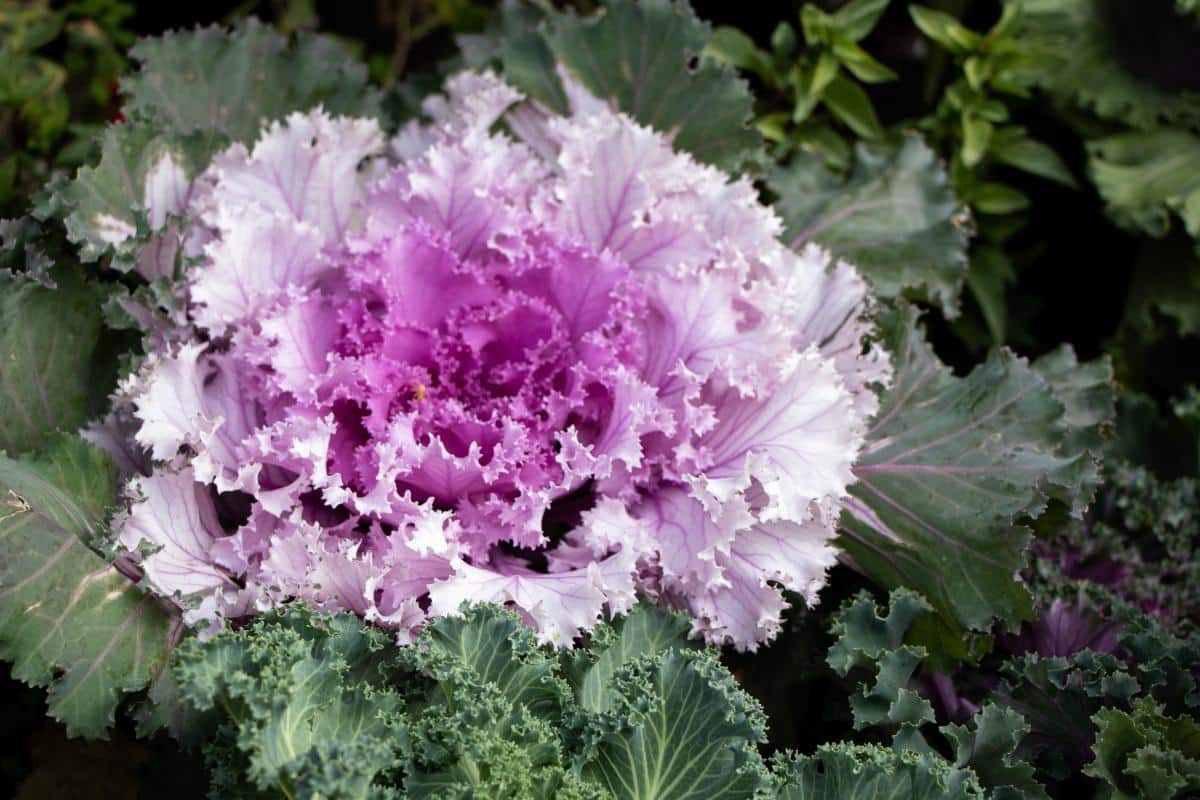
While technically a leafy vegetable, ornamental kale, and cabbage produce rosettes in shades of purple, pink, and white. Brush off the snow, and they’re still as lovely as ever. They withstand harsh winter conditions and add bold, dependable color to winter gardens.
Woody Shrubs
13. Witch Hazel (Hamamelis mollis)
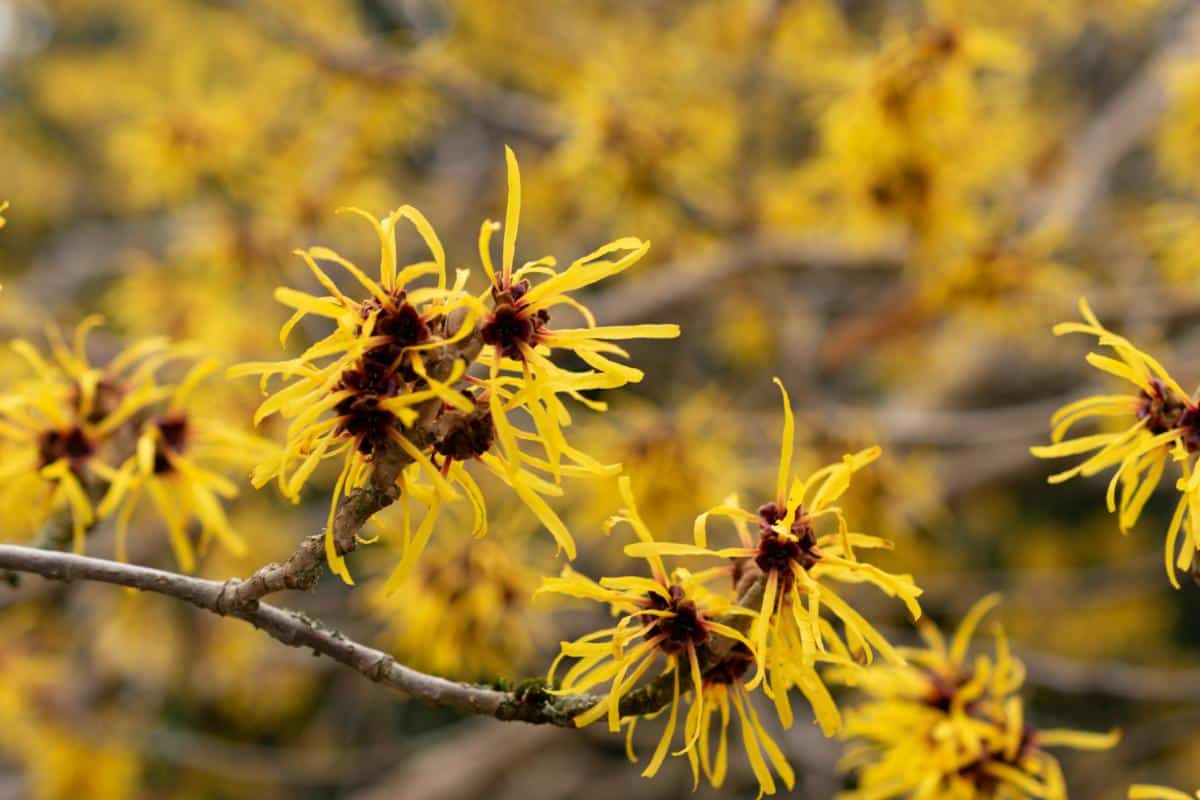
This open, upright shrub blooms in late winter, producing fragrant flowers of sulfur yellow to brighten the dull winter landscape. When grown en masse, its light fragrance is more pronounced. Witch hazel can be grown as a shrub or as a small tree, depending on how it’s pruned.
14. Winter Heath (Erica carnea)
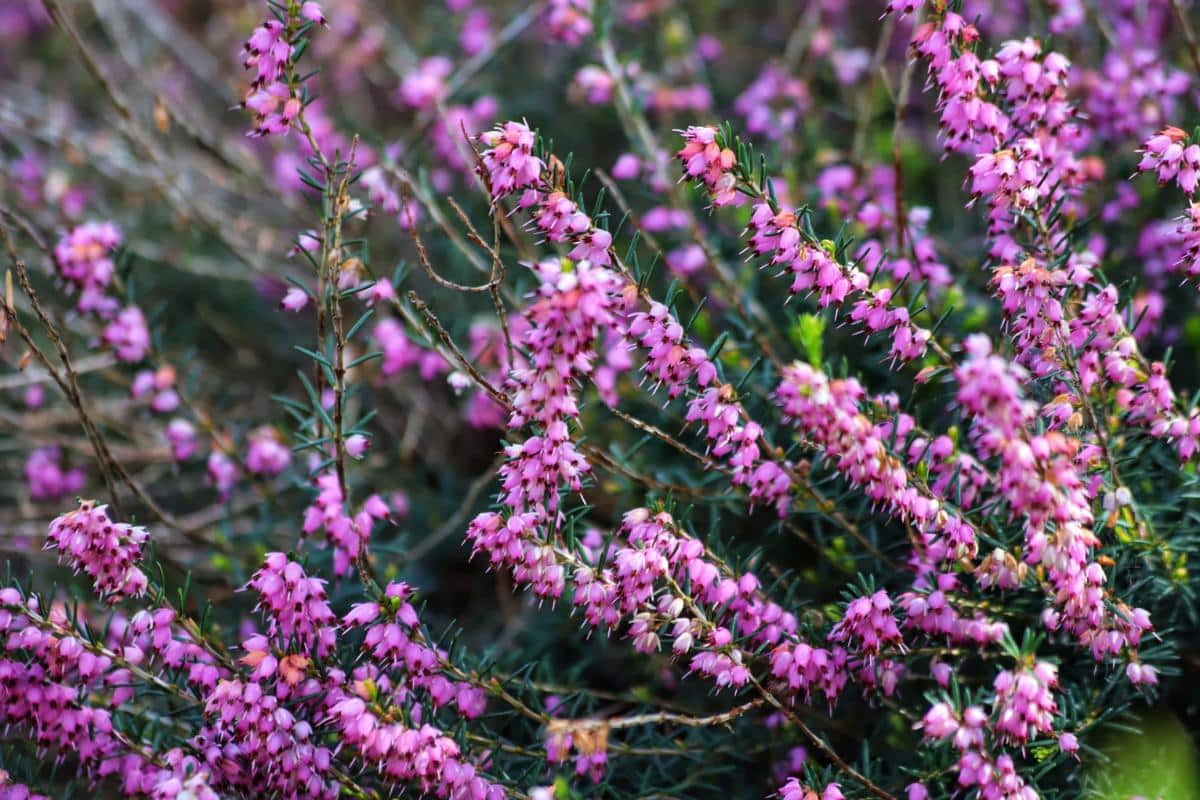
Winter heath will grow best in areas with acidic soil – a requirement for most any plant in the Heather family (Ericaceae). Heath is a low-growing evergreen shrub with pink or purple flowers that look like tiny lanterns. It's a tough plant that thrives in cold temperatures and adds color when little else is blooming.
15. Japanese Pieris (Pieris japonica)
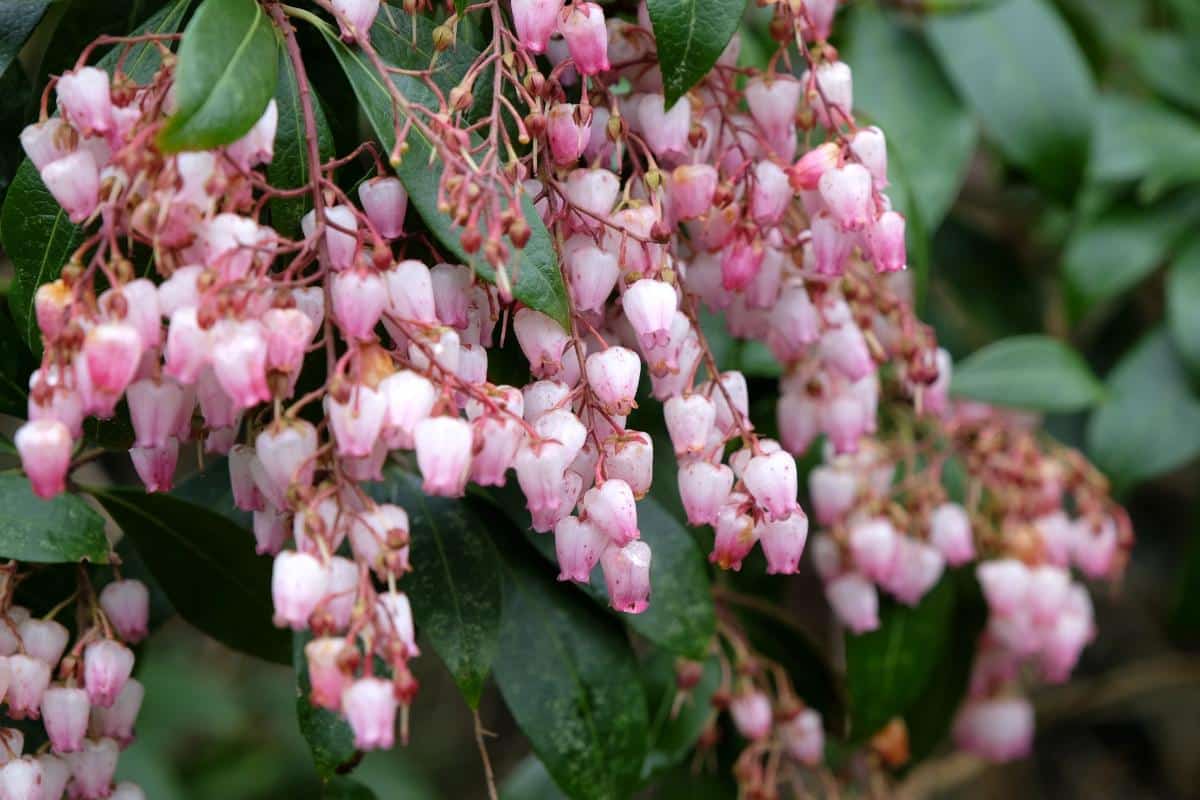
Japanese pieris is another member of the Heather family that does best with acidic soil. It provides the ultimate in four-season interest. In late winter, it bears drooping clusters of white or pink flowers over evergreen foliage. In spring and summer, new leaves sprout in shades of bright red or yellow that look like flowers, while the actual flowers give way to decorative white berries. This shrub always has something new going on!
16. Variegated Wintergreen (Gaultheria procumbens)
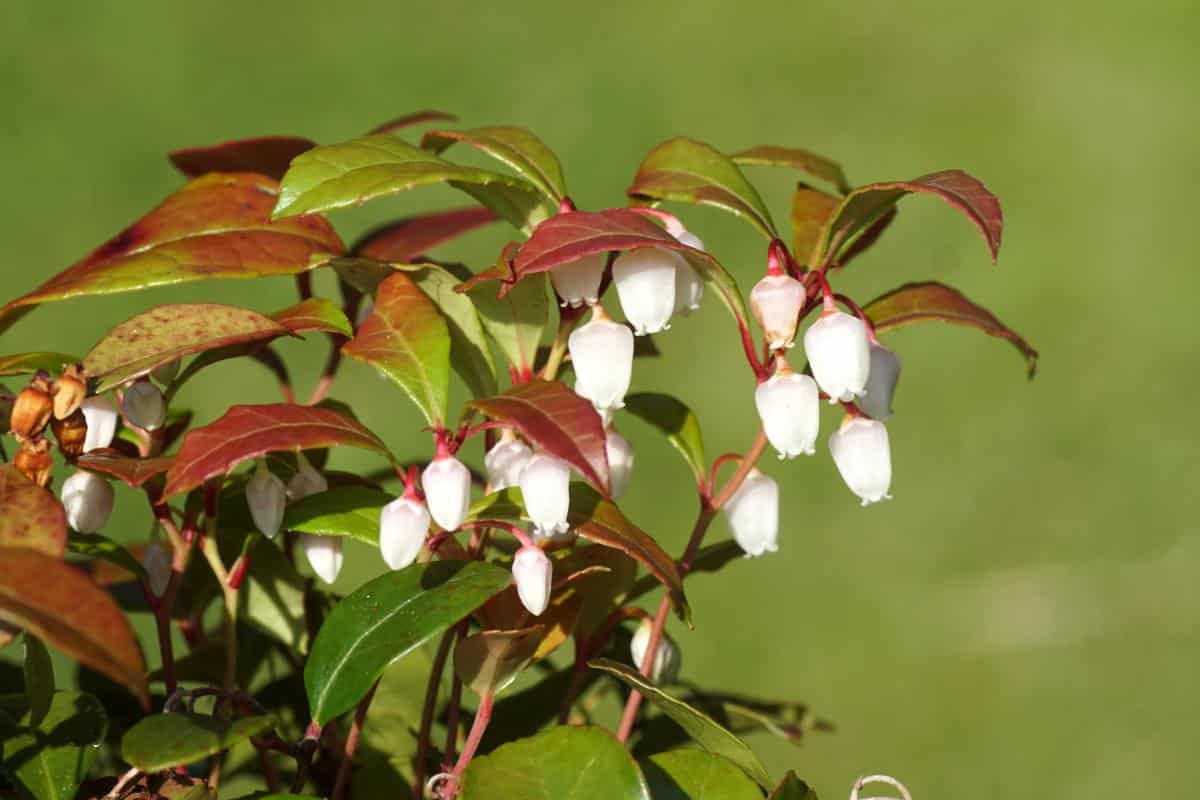
Wintergreen's variegated foliage adds color to the garden year-round. Its lantern-shaped flowers in white or red appear in winter, followed by red aromatic berries with a brisk wintergreen taste. It grows well in shade and provides beautiful ground cover. This delightful creeping evergreen is also in the Ericaceae family and will need acidic soil in order to prosper.
Winter Flowers for Warmer Climates
For those of you in a warmer climate where bulbs don’t succeed as well, here are some fantastic winter bloomers to add to your garden.
Perennials
17. Algerian Iris (Iris unguicularis)
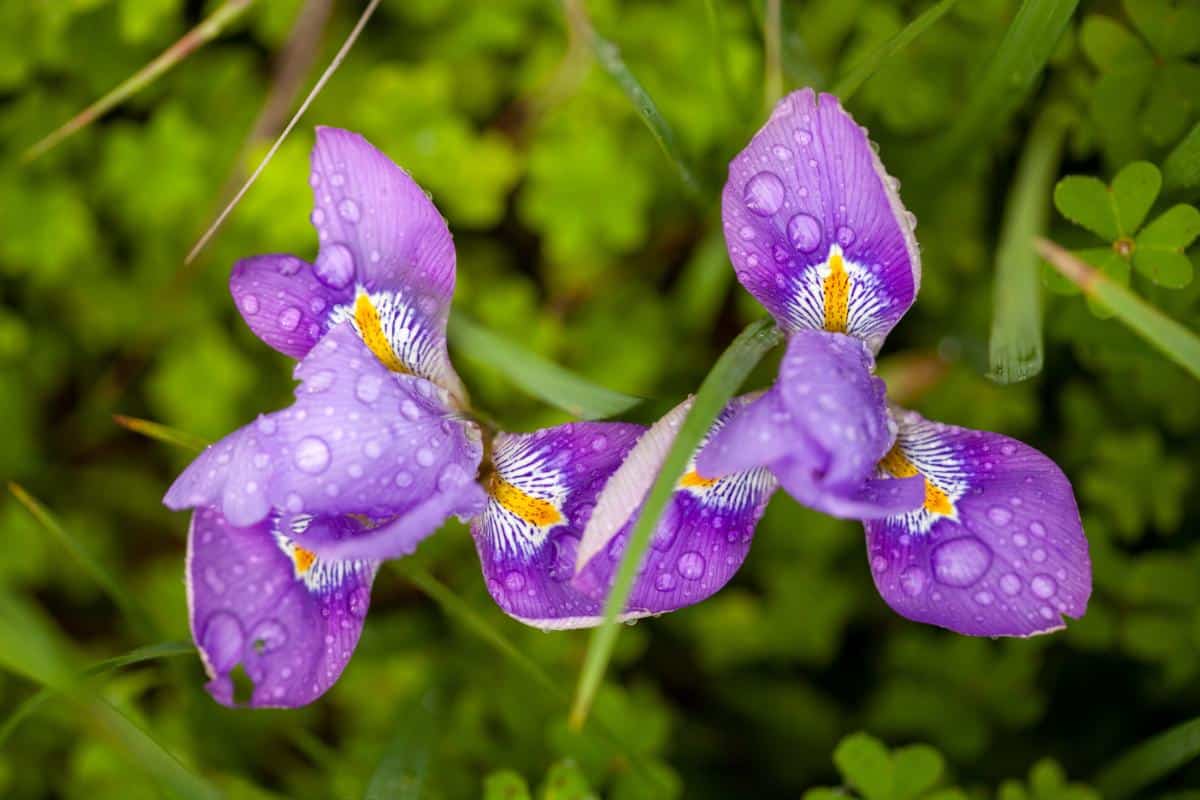
This iris grows both in sun and shade, and its flowers bloom from late fall through winter, adding a merry pop of color to the garden. Its lavender flowers are sweetly scented, they last a long time, and they thrive in mild winter temperatures. It’s a resilient little iris, so don’t be fooled by its size.
18. Cyclamen (Cyclamen spp.)
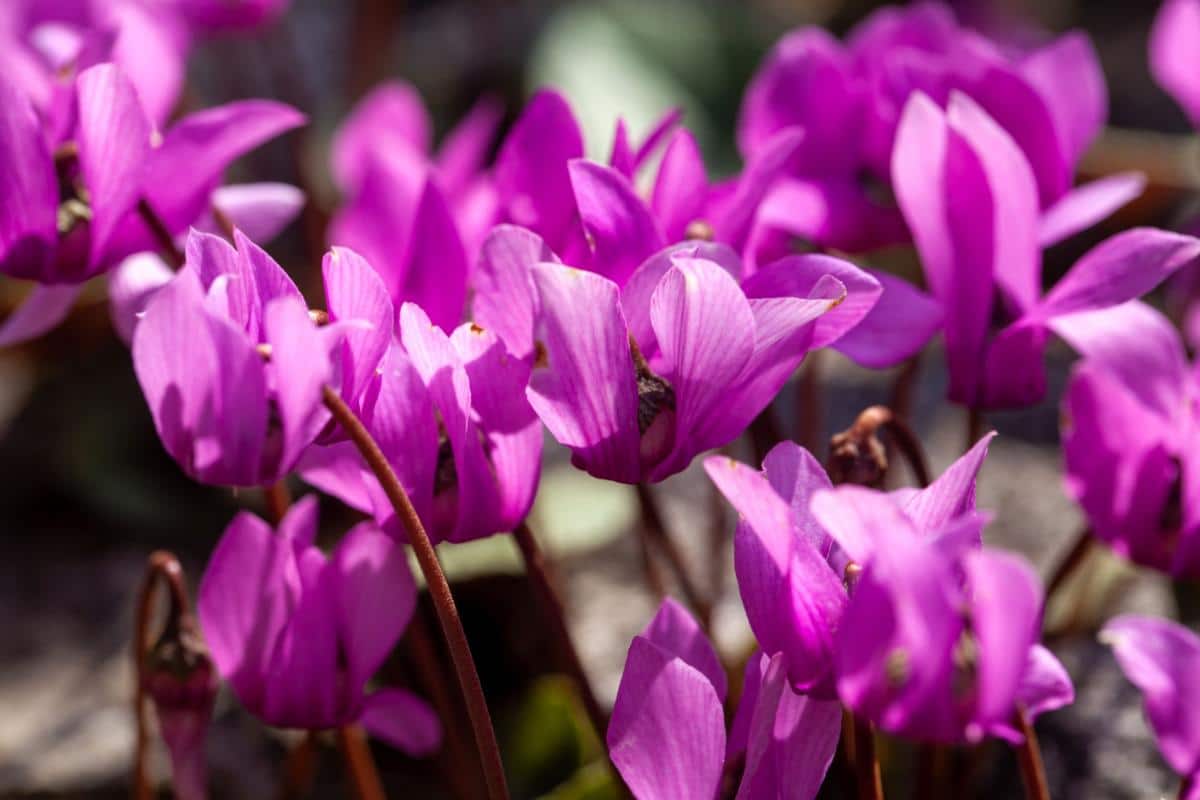
In northern climates, cyclamen is most often found as container plants sold by florists. However, they prosper and even naturalize in warmer areas of the United Kingdom and in other countries. Cyclamen’s heart-shaped leaves and delicate flowers bloom in winter in shades of red, light purple, white, pink, and fuchsia. They look like butterflies in flight.
Woody Shrubs
19. Winter Daphne (Daphne odora)

Known for its intoxicating fragrance, Winter Daphne blooms in late winter, its pink or white flowers filling the garden with sheer bliss. Variegated varieties are available for those who want to add extra pizzazz through the rest of the growing season, and its evergreen leaves stay lit all year.
20. Winter Jasmine (Jasminum nudiflorum)
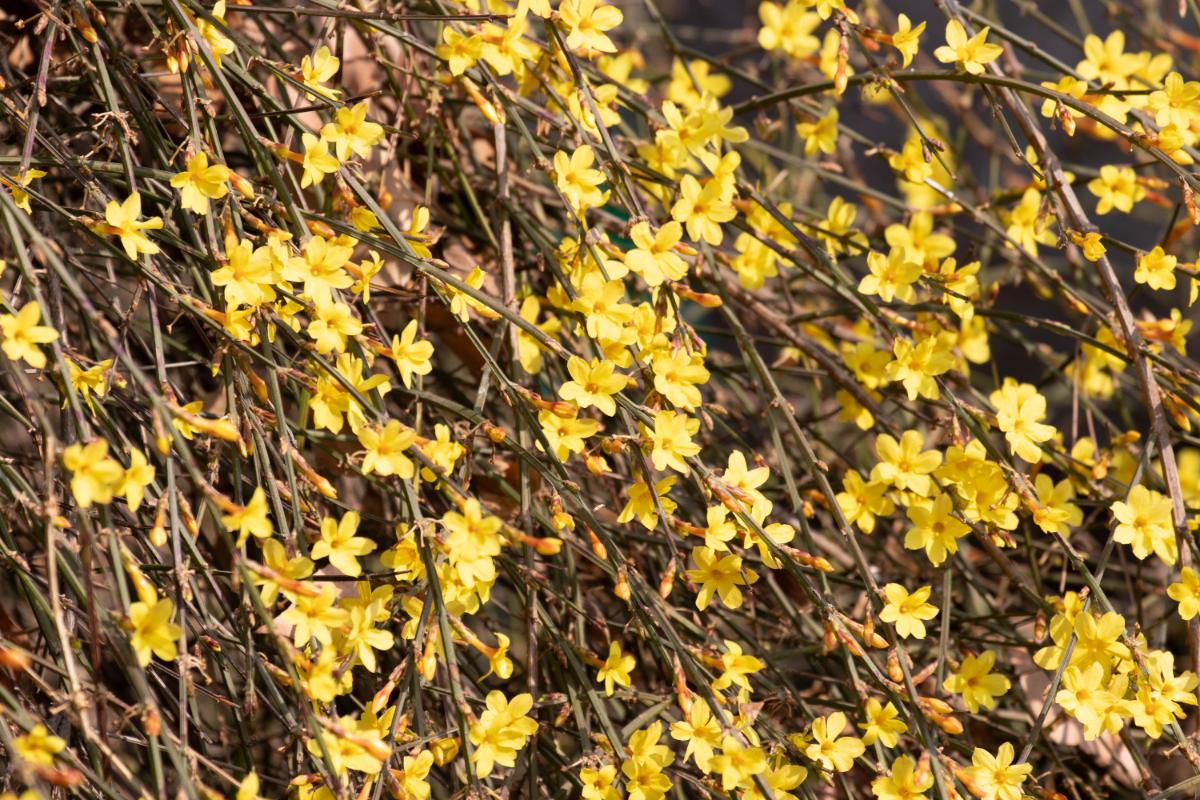
This vigorous shrub, which is a member of the Olive family, produces bright yellow flowers in late winter before its leaves emerge, adding cheerful color to garden walls or fences. Winter jasmine with its long arching branches can be grown as a graceful shrub or a tall, cascading vine. Alas, though its name is jasmine, these flower are odorless.
21. Camellia (Camellia japonica)
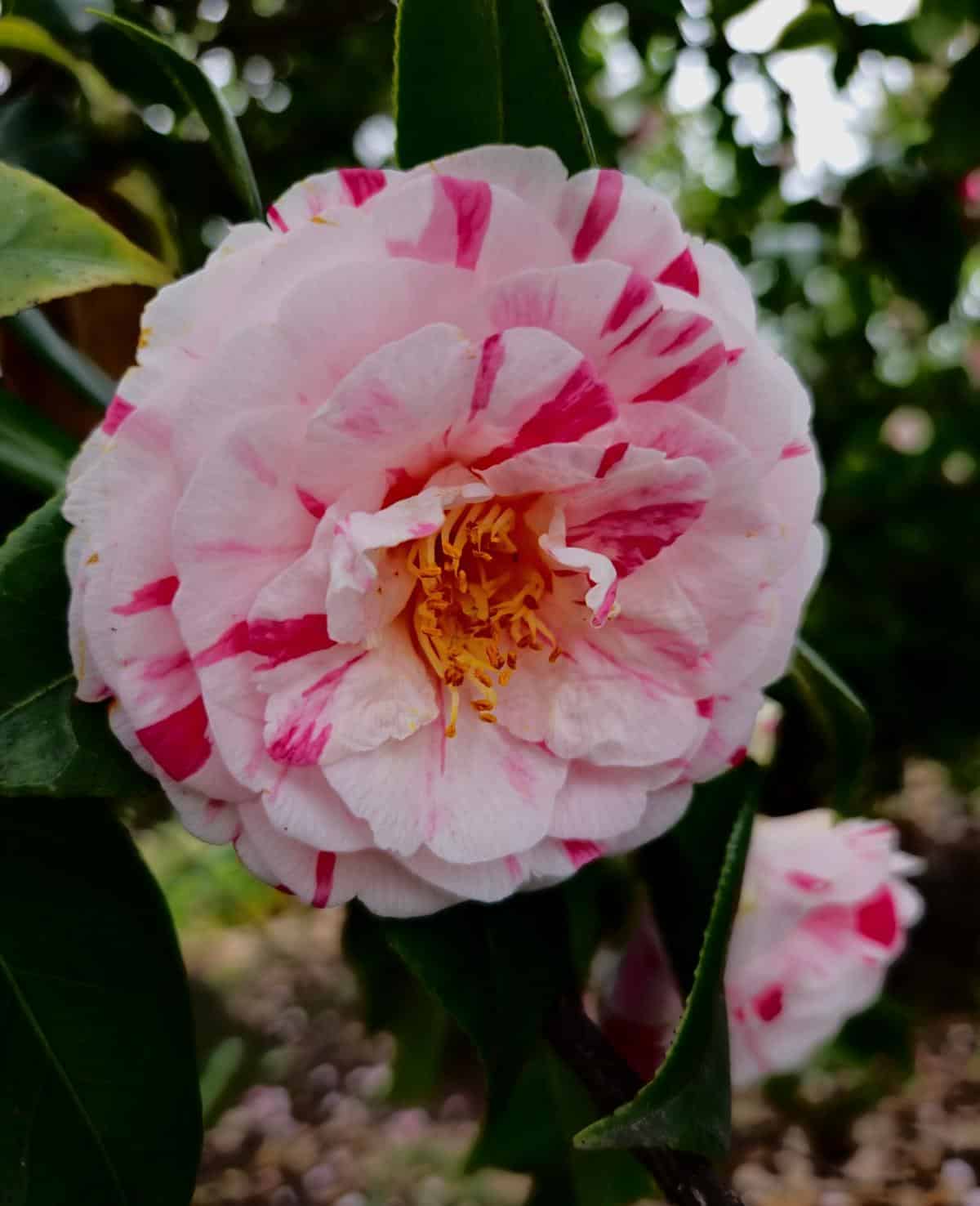
I have yet to see a camellia in person, but the blooms seem incredible, perfectly symmetrical, and as if made by some master craftsman. Camellias are evergreen shrubs that produce stunning red, pink, or white flowers from fall to spring, depending on the variety. Like roses, camellias go back for thousands of years in eastern and southern Asia. Wherever they grow, they bring beauty to the landscape.
22. Rosemary (Rosmarinus officinalis)
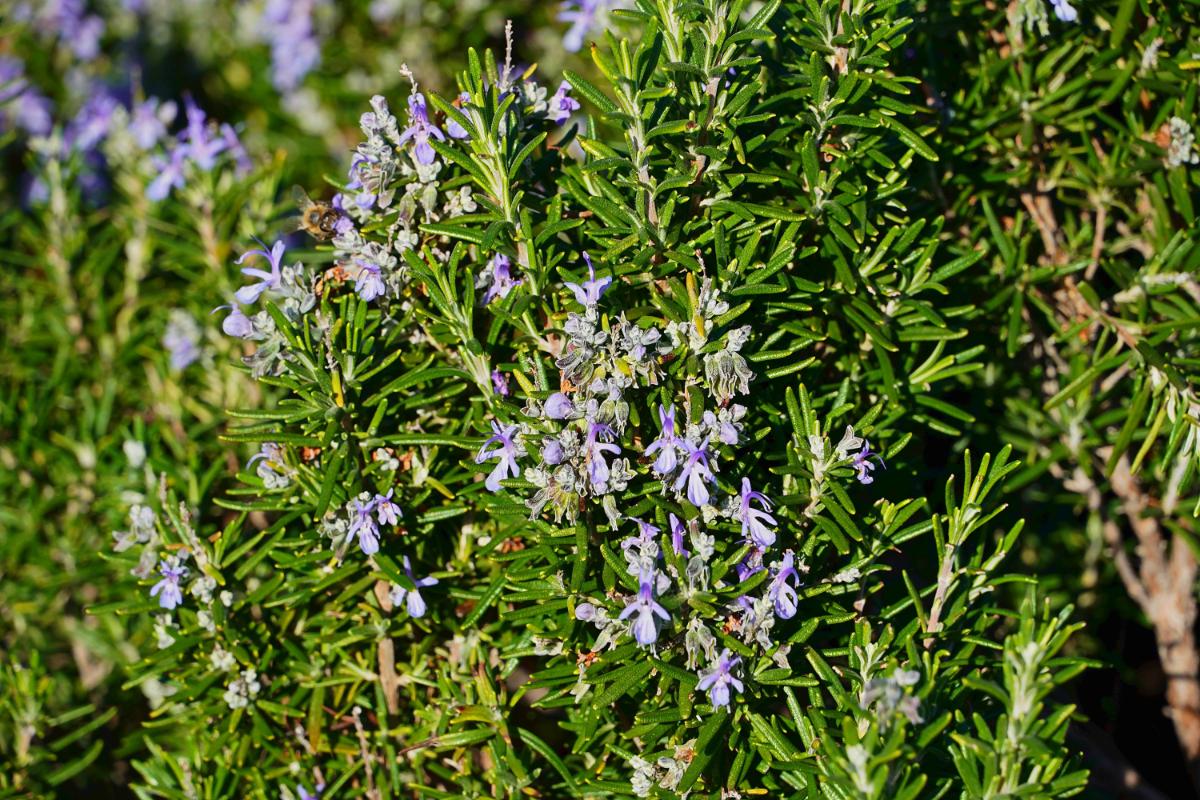
While known primarily for its uses in cooking and in herbal medicine, rosemary produces clusters of periwinkle-colored flowers throughout the winter. It’s a great source of nectar for bees and hummingbirds in late winter.
23. Manzanita (Arctostaphylos spp.)
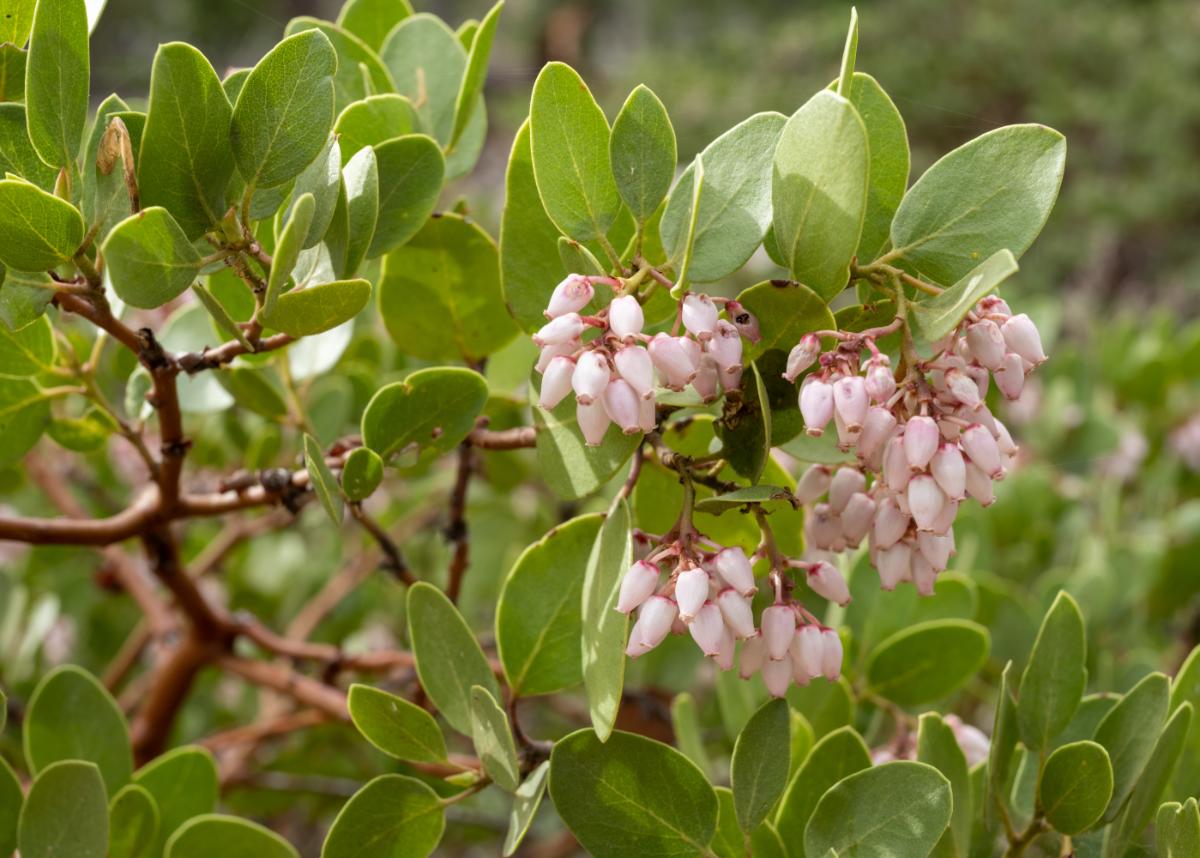
Native to the western U.S., manzanita are bursting with white, lantern-shaped flowers in winter, attracting bees and other pollinators to their nectar-rich blooms. This plant also offers four-season interest. Their mahogany-colored trunks and branches gleam when the sun hits it right. Lantern-shaped flowers are followed by blushing berries that persist.
24. Chaparral Currant (Ribes malvaceum)
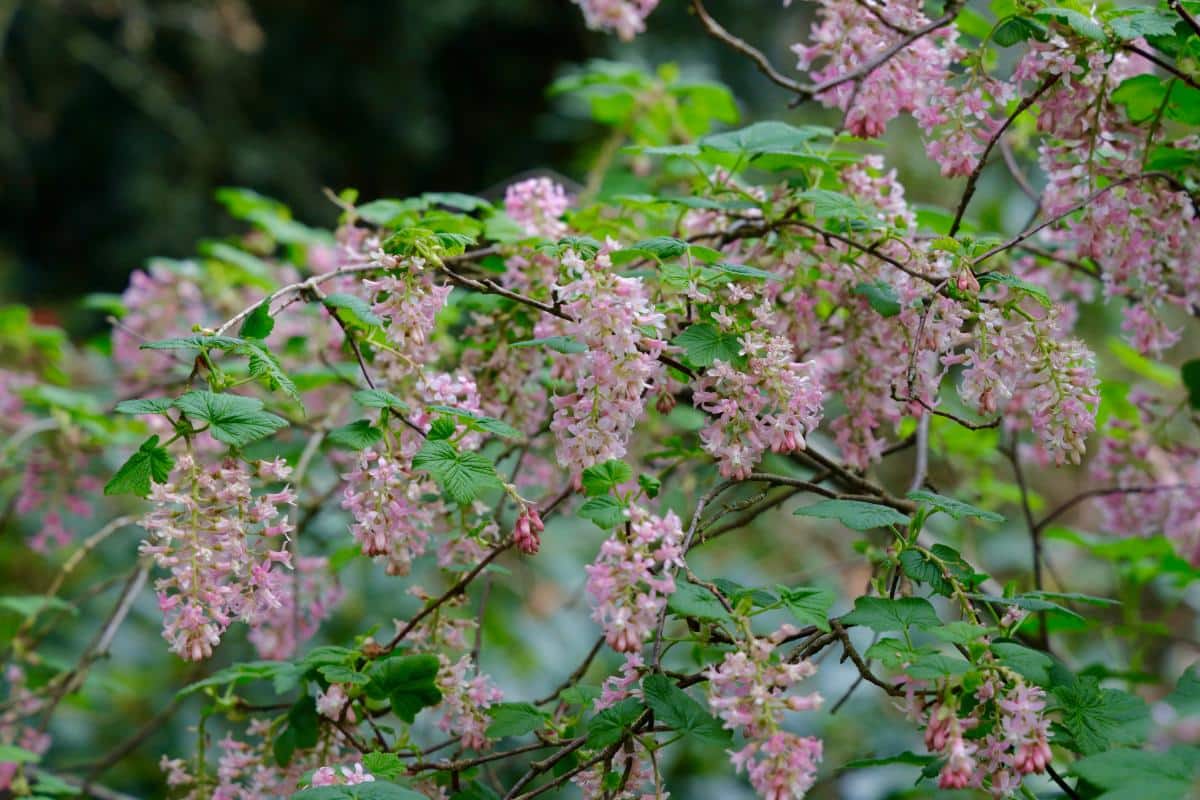
This California native blooms in winter with pink or white flowers, providing essential nectar for bees during the colder months. It’s a cousin to the gooseberry, so its purple berries are greatly appreciated and edible. This deciduous shrub grows to be about 5 feet tall and is tough in severe weather.
With these winter bloomers, you can keep your garden vibrant and colorful even in the coldest months, giving pollinators and gardeners something to enjoy year-round.

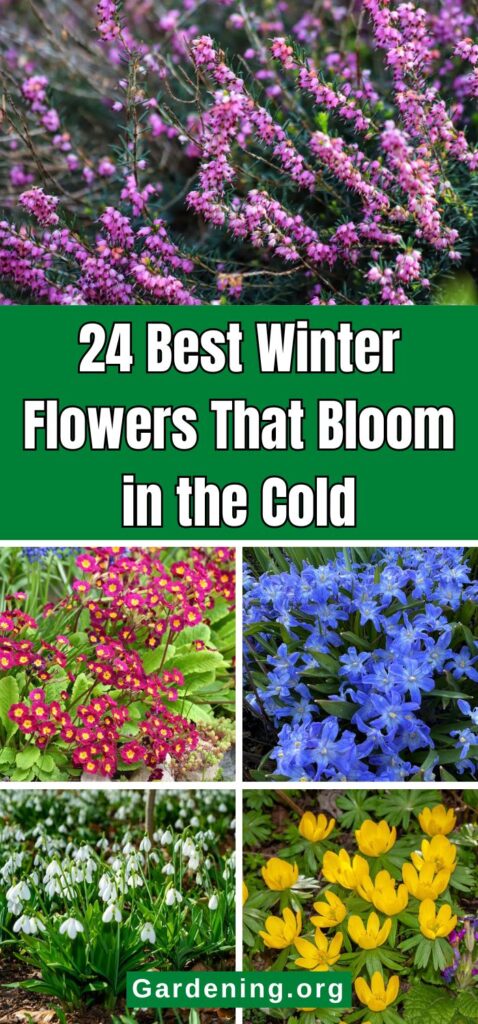
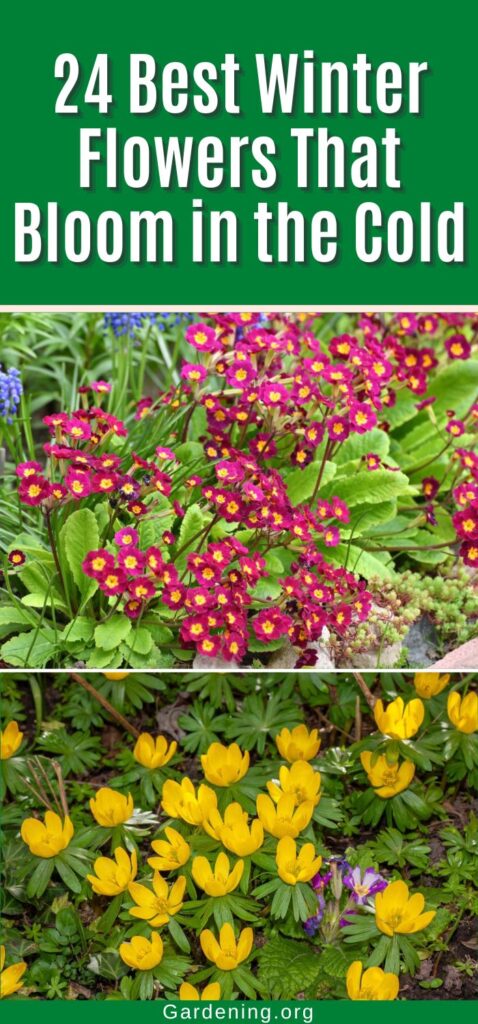
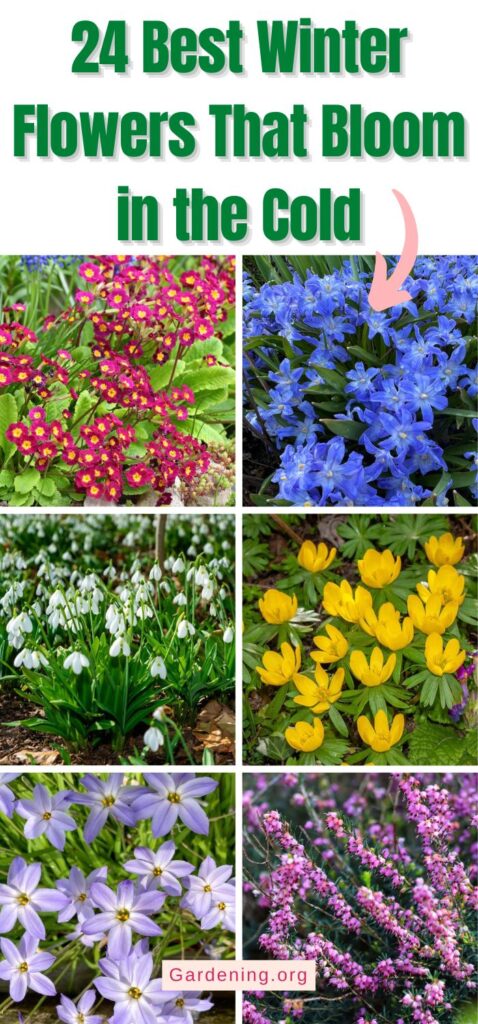
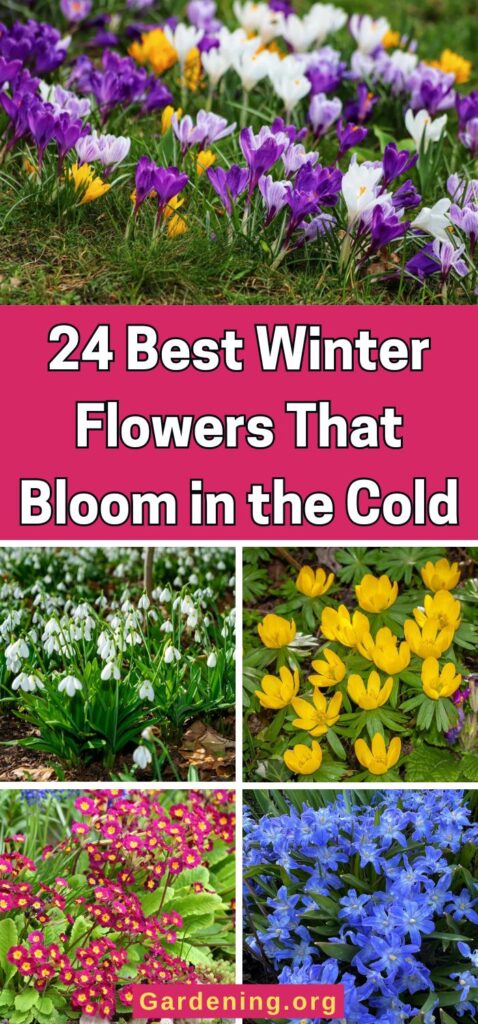

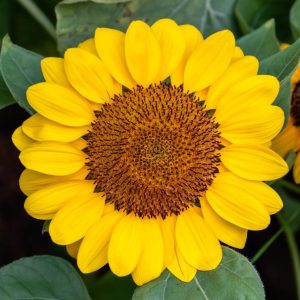
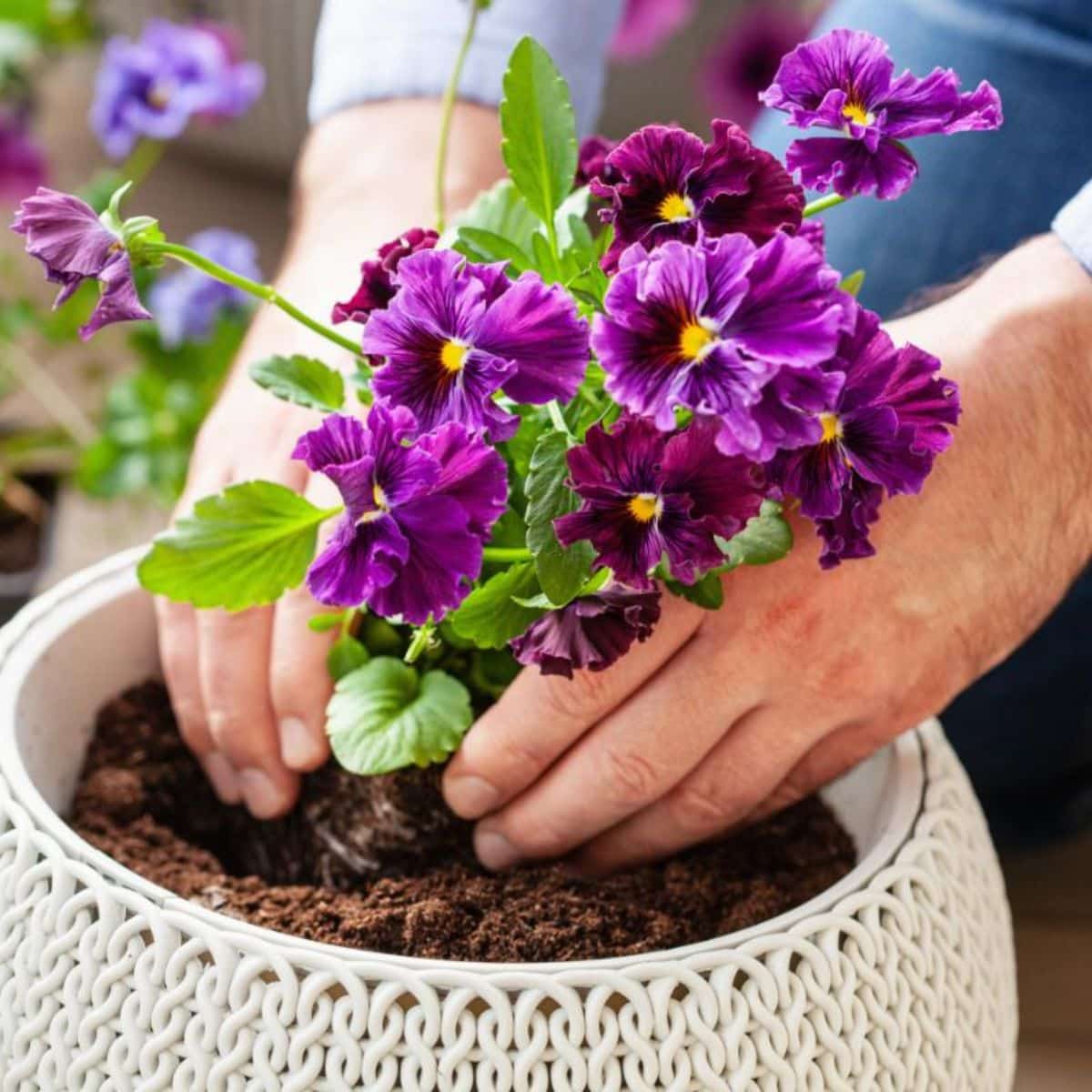
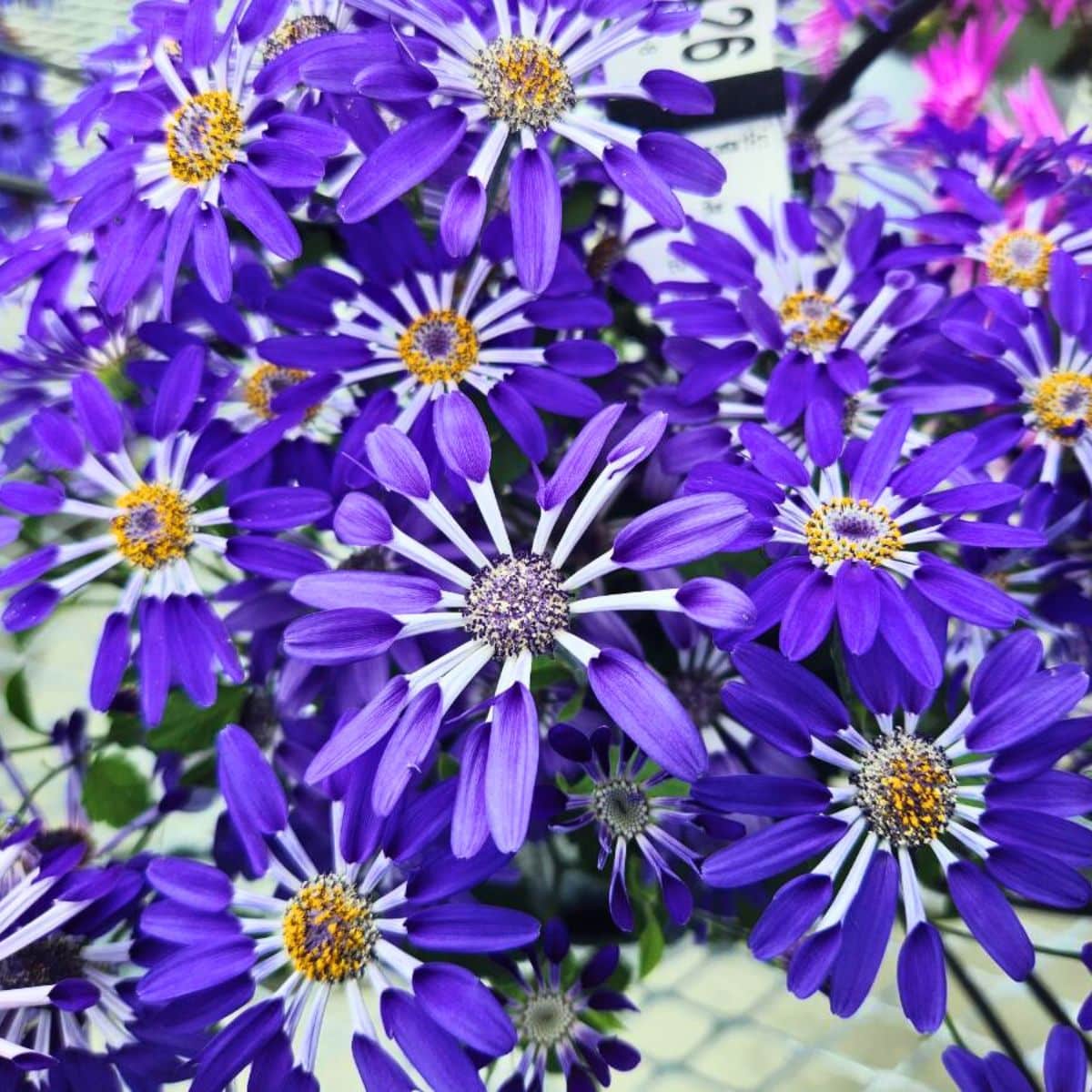
Leave a Reply